Cito Accent Table: Wood, Concrete & Glass
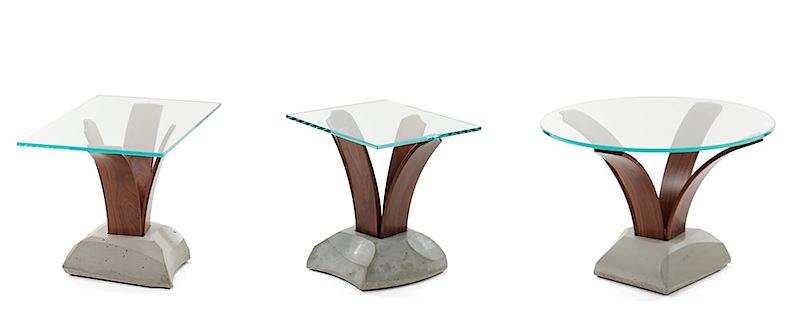
The Cito accent table is designed to accompany the Pontus console table. Both tables use the same system of bent wood and cast concrete. Cito is organized around the notion of a pedestal base that is centered under the glass top. Pontus is more about the asymmetrical possibilities of an offset base. See this post for more about the Pontus Console Table. Cito uses curves with three different radii that can be paired together. The result is similar to a flower at different stages of being open. The glass top sits on these points so Cito can accommodate a wide array of shapes and sizes. I should point out the the shaping and faceting of the top of the walnut curves are different every time I make the table. These moments satisfy my intention of making one-of-a-kind pieces of furniture that display a sense of spontaneity.
Cito: Rectangular
Walnut Cast Concrete & Glass, 20.5H” x 30”L x 18.5”D More Information
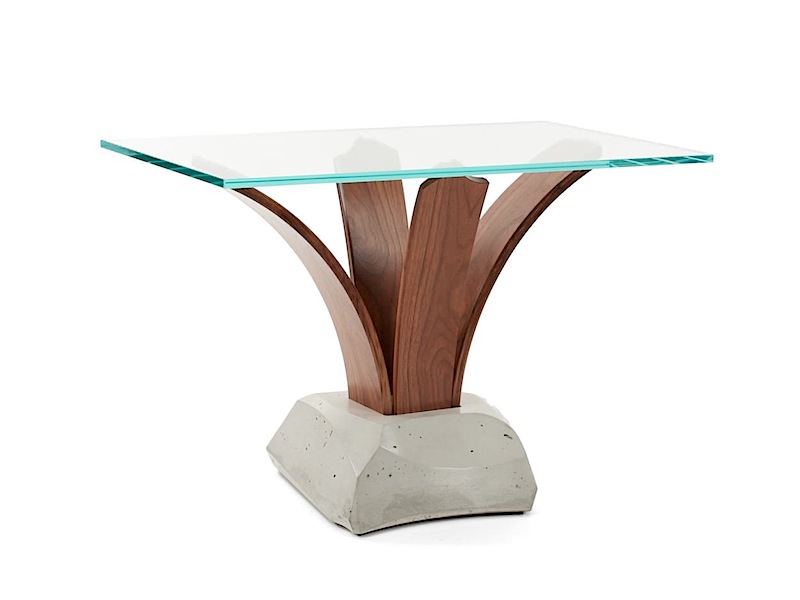
Cito: Small Rectangle
Walnut Cast Concrete & Glass, 20.5H” x 20L x 16.5”D
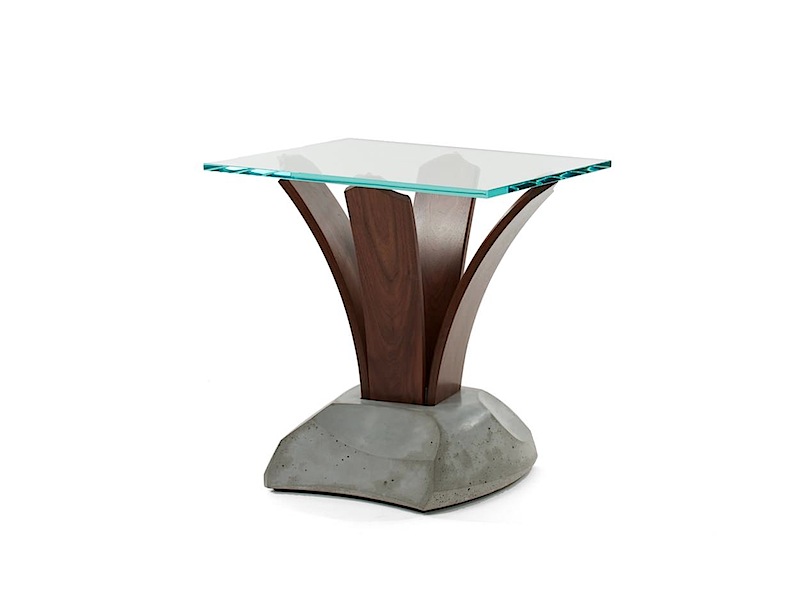
Cito: Circular
Walnut Cast Concrete & Glass, 20.5H” x 30”L x 30”D More Information
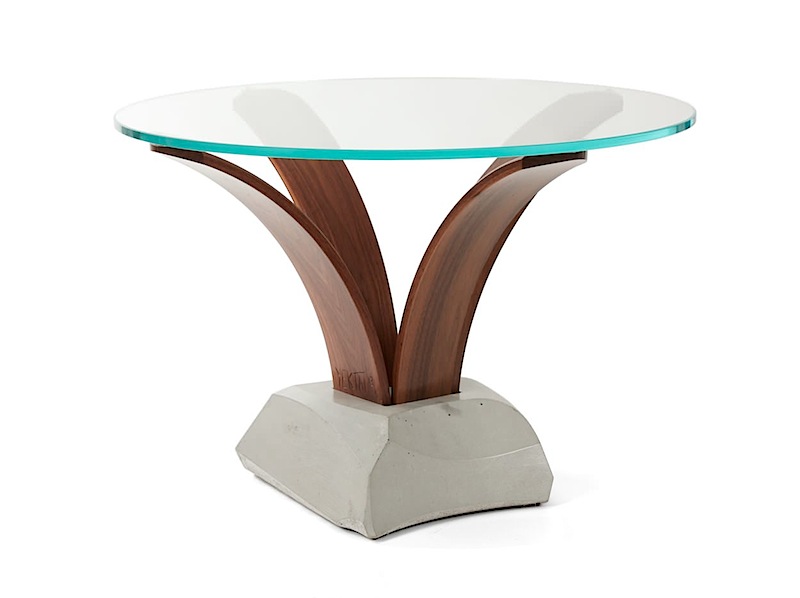
All three of the versions use the same cast concrete base. I have used a different technique this time which allows for a much more intricate casting. The overview is that I made a wood positive with all of the facets and movements that I wanted and then I made a silicone mold from it. The result is one of th most complex castings I have ever made.
For more information on the construction process of the mold and curves please see Cito & Pontus Construction post.

The four walnut curves connect at the center of the casting via hex bolts. This forced me to consider a decorative solution that would hide the hardware. These are the moments that inspire me to grow. In this case I shaped a small piece of ash with intricate facets. I then colored the ash with artists oil color to accentuate the grain. The result is an unexpected moment that reveals itself when the viewer approaches the table.
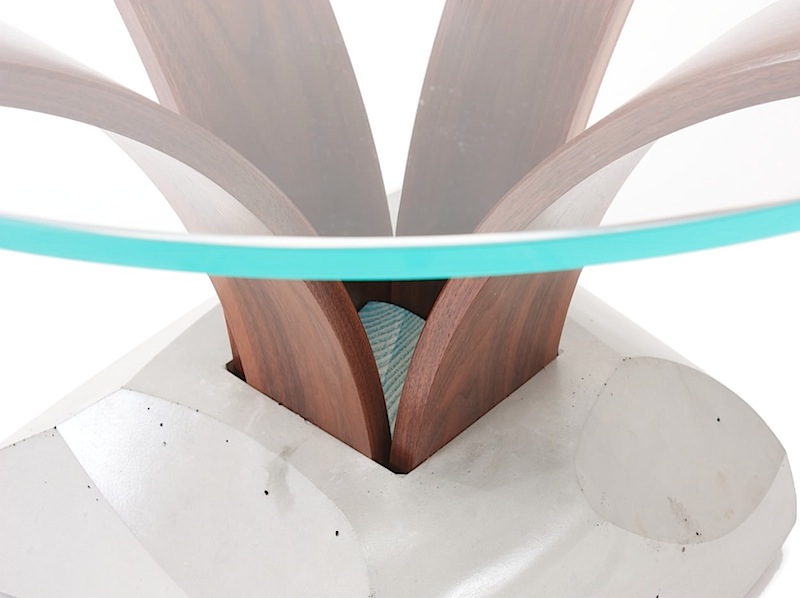
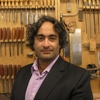 By Nico Yektai -
By Nico Yektai -New York based designer/maker Nico Yektai opened the doors to his Hamptons studio in 1995 after completing the MFA program at the School For American Craft at the Rochester Institute of Technology. The rigorous technical training complimented his background in Art History, which he studied, at Hobart College in Geneva NY. Yektai has synthesized this background into a singular style that has gained him national attention. Visit nicoyektai.com for more information